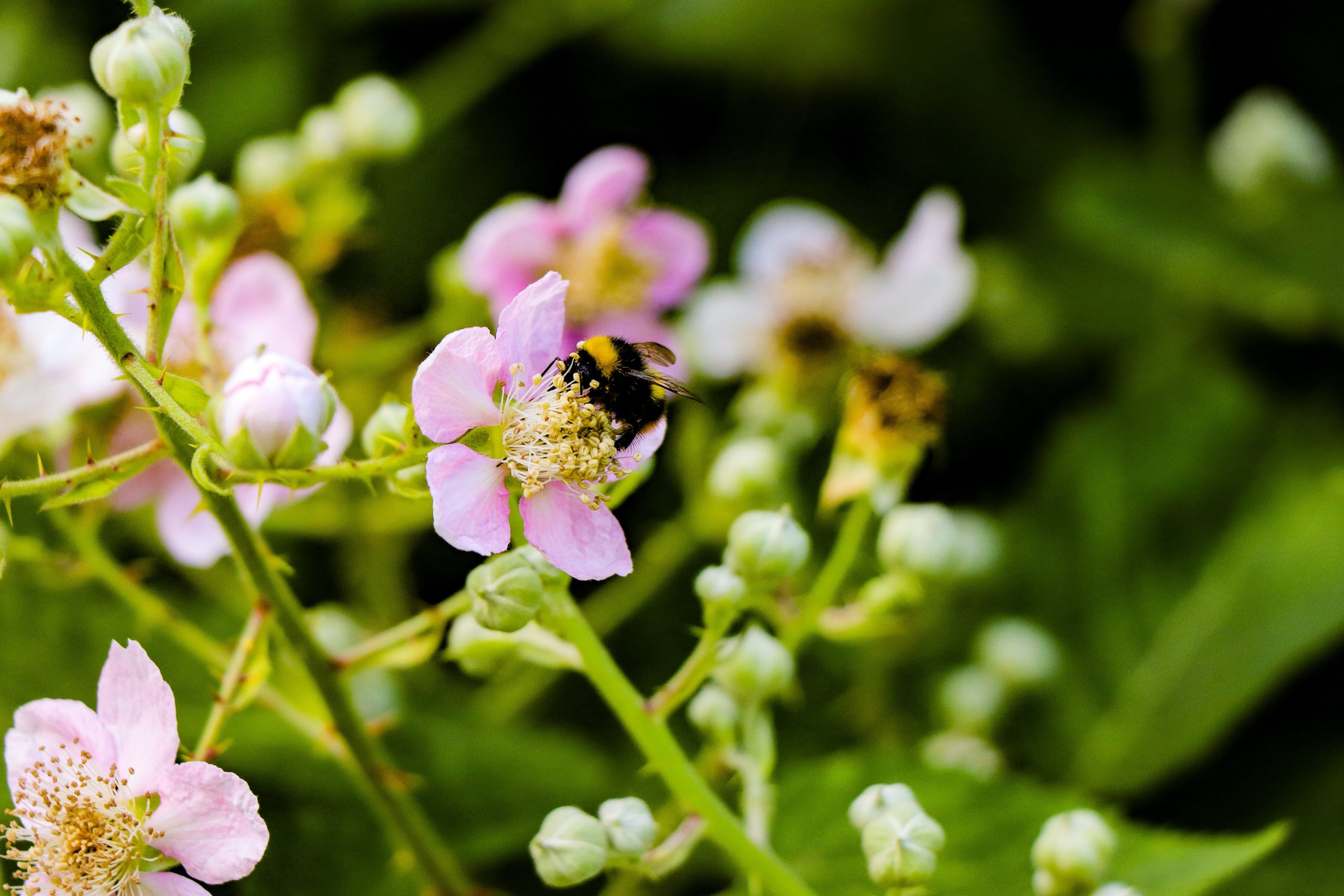For breakfast, maybe you enjoyed a bowl of fresh berries, toast with almond butter, a monstrous cup of coffee, and a frothy glass of orange juice. Without pollinators––our favorite garden friends that buzz about––that dry toast would be the only item on the menu.
Bees, wasps, beetles, flies, butterflies, hummingbirds, and bats all play a role in bringing food to the table. For our ecosystem, they’re critical. They keep habitats healthy, running smoothly, and support biodiversity. The threat to their survival is real. They need our help to provide bee-friendly surroundings so flowers can thrive, we can feed the planet, and their species can avoid extinction.
Plant Pollinators for Pollinators
Incorporating pollinator-friendly annuals and perennials into your garden space should start with researching which plants thrive and feed the birds and bees in your state. Luckily, the team at RELS has done that for you when it comes to living in the Mid-Atlantic.
Here are just a few of the flowers that thrive in Maryland’s climate:
- Milkweed – Hardy, fragrant wildflowers that caterpillars and monarch butterflies cannot get enough of.
- Clustered Mountain Mint – This plant has ten weeks of peak bloom and attracts diverse pollinators.
- Bee Balm – One of the best nectar sources that caterpillars cannot get enough of.
- Grey Goldenrod – Growing 1-3 feet tall, goldenrod is gorgeous in the garden, is allergen-friendly, and up to 122 different species of caterpillars are big fans.
- Aster – An excellent nectar source in the fall, asters are lovely at full bloom and nestle into flowerbeds easily.
- Joe-Pye Weed – A low-maintenance plant whose fragrant blooms are a Mid-Atlantic favorite for pollinator-friendly gardens.
- Lantana – Colorful and oh so fantastic, this blooming beauty is a favorite of butterflies and hummingbirds.
- Scarlet Sage – This hummingbird favorite is bright red, and butterflies love it too!
To attract a variety of pollinators, choose plants with different shapes, colors, and heights that reach their peak during different seasons. If you plant it, they will come: the more native to the area, the more likely it is to attract beneficial insects and birds.
Think Beyond the Blooms
Birds love sunflowers, coneflowers, and black-eyed Susans. Rather than cut them back in the fall, allow them to go to seed as a winter food source. In addition to planting flowers hummingbirds love, put up bird feeders and nesting boxes to encourage them to stay close by.
When we think of power flowers that attract winged friends, we don’t always remember trees, shrubs, and vines. These are all great habitat sources for birds and pollinating bugs alike. They provide food and a safe place to build hives, nests, and branches to rest.
A shallow, gently-moving water source––from a small water bowl to a fountain or pond––allows pollinators a safe place to drink and advertises that your habitat welcomes them to stay. If you’ve considered collecting rainwater, this would be a great time to incorporate harvesting storm or snow run-off drainage and repurposing it.
The more you can reduce dependence on pesticides, the better. They are harmful to the creatures you’re trying to protect and aren’t great for soil health either. Having beneficial insects––like lady beetles, hover flies, and praying mantises––can help control the bugs that devastate gardens, yet they won’t interfere with the ones you want to welcome.
Composting
Do you have a little extra space in your yard? Rather than throwing away veggie scraps, yard trimmings, and shredded copy paper, you can create a compost pile. With some fertile soil and elbow grease, bugs and worms will join in and lend a hand to make compost for your garden in just a few months. Those fresh fall leaves? Toss them in!
Let RELS in Frederick and Silver Spring Help You Make Your Pollinator Garden Bee Happy!
Let us help you be the buzz of the neighborhood! RELS is your garden partner for all things plants and pollinators. Browse our vast selection of products and find easy solutions to help create the bird and bee habitat of your dreams.

